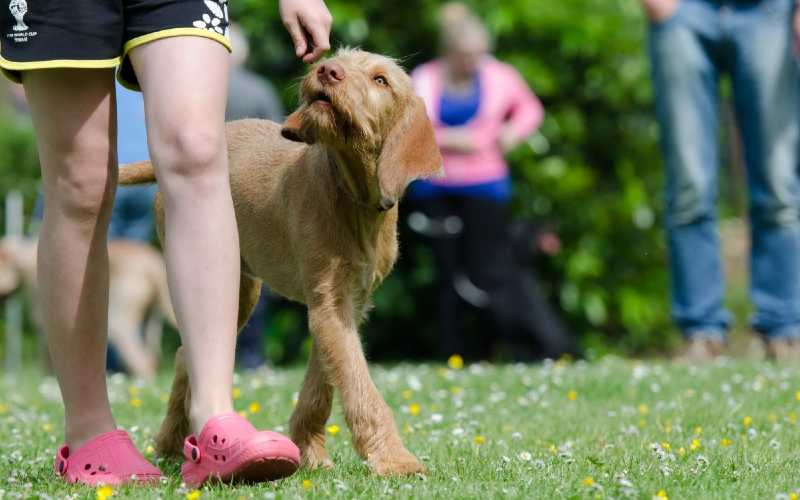Many dog trainers who teach positive reinforcement dog training techniques (the school of thought that I agree with) suggest using either clicker training or a marker word. With a marker word dog training can become easier and the dog can become reassured and trust you. But what is a marker word in dog training and why is it beneficial?
What is a Marker word in Dog Training?
A marker word is used in dog training to let your dog know that he has done something good or is displaying positive behaviour. You can choose a marker word that is anything really – we use ‘Yes!’ But you can also use words such as ‘nice!’, ‘good!’ or ‘top!’ You can use any word really but the key is for your dog to get the idea that it means something good and usually a treat will follow approximately 2 seconds after you saying it!
Is a marker word better than clicker training?
Using a marker word and using a clicker operate under the same principles. When you clicker train a dog the point is that the dog understands that the clicker means he has done something good and a few seconds after the click his treat will appear, or meat will fall from the sky!
However there are a few practical issues with using a clicker…
- Holding a clicker takes up a hand and that becomes fiddly when you already have the lead in one hand and poo bags in another! Using a marker word instead means that you have another hand free.
- Sometimes you forget the clicker – this can leave gaps in his training and so you don’t get consistency.
- Sometimes you click the clicker by mistake. In this situation you have to give the dog the treat 2 seconds later whether he did something right or not! Otherwise you will confuse the training and he will not always be sure that a treat will follow!
List of Marker words for Dog Training
Here are some ideas for marker words that you can choose:
- Top
- Yes
- Brill
- Nice
- Super
- Excellent
Remember not to Confuse your Dog!
Remember that you should choose a marker word that you don’t use often in your regular conversations. Shortly after we chose ‘yes!’ as the marker word we had a misunderstanding! I finished some work on my computer and then shouted ‘Yesssss!’ The dog came running into my study for his treat! But I hadn’t got any! Bad error on my part! You see the dog has to get the treat EVERY time you use the marker word, even if you use it by mistake! Now I have to walk around with treats always in my pocket!
Using your Marker Word for dog training
With Blake, we are using the marker word to train him and have him gain confidence outside the house. In the house he is a REALLY good dog. His problem is when we go outside, he is scared of so many things like bikes, scooters and other dogs they set him off barking. We are going to use this approach to make sure that he is more focused on us as his owners than on other ‘scary’ things. But first we need to start using it in the house.
Start in the House
As I mentioned, we are starting to use his marker word dog training to mark when he is looking at us (instead of what other scary thing he might be tempted to focus on.
So we start training him in the house first to get him used to the marker word and the process. We hold the treat or chicken and when he looks at us we say ‘yes!’ and follow with the chicken or treat 2 seconds later.
We are repeating this around the house twice a day and now we are quite sure that he knows that the ‘yes!’ means something positive.
Transfer to Outside
The next step is to transfer the training to outside. So we repeat at the front door and in the garden. Then we go out of the house staying within the first 3 houses. Then we get his attention and when he is sitting looking at us we say ‘Yessss!’ and follow with the treat. Once he has started to get it close to the house we will start to use it in other situations, but he needs a good few weeks of training right here for now.
Move further afield
When your dog has grasped this and starts to become more confident you can start to use it in a quiet place in the park and even in the town centre when he is ready.
Using the Marker Word as a Positive interrupter
You can then start to use the marker word as a positive interrupter. That means that when he sees the ‘scary’ thing such as a bike or another dog, we can catch him just as he is about to look at it and then say ‘yess!’ It is likely that his focus will turn to you because he knows that a treat will follow!
Do you use a marker word? We would love to hear how you have found this method of training so please do comment on our blog!
If you enjoyed this article you might also like to read about Puppy Training Tips


We have a Patterdale that has had a very poor start in life on a farm. This article has been a great help in my understanding her.
Thanks